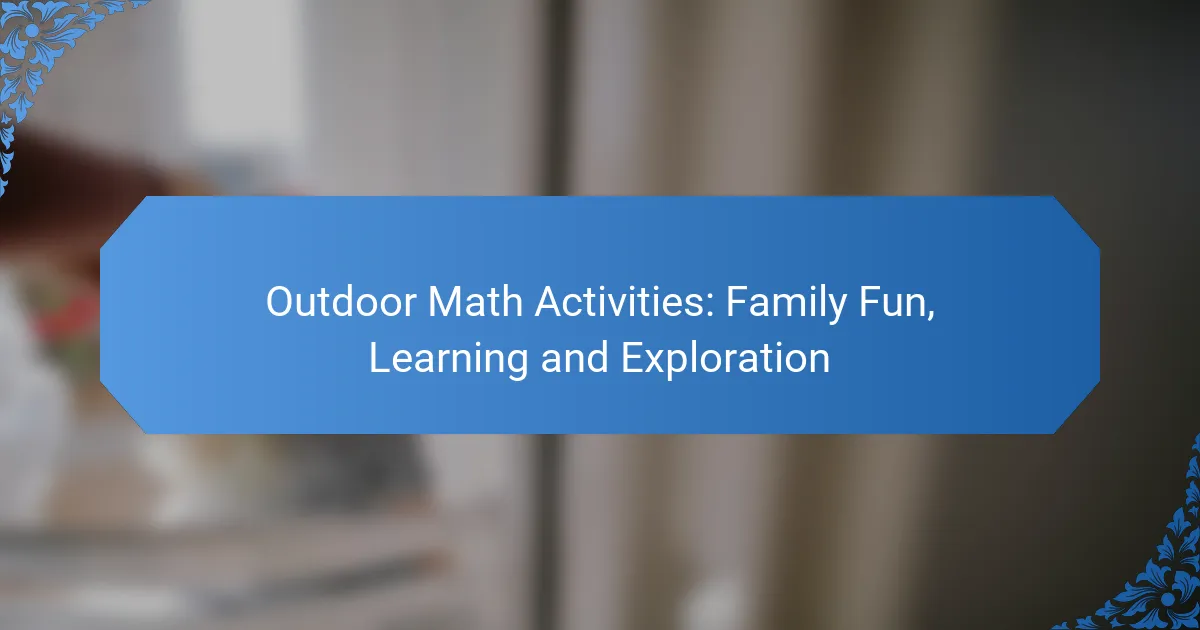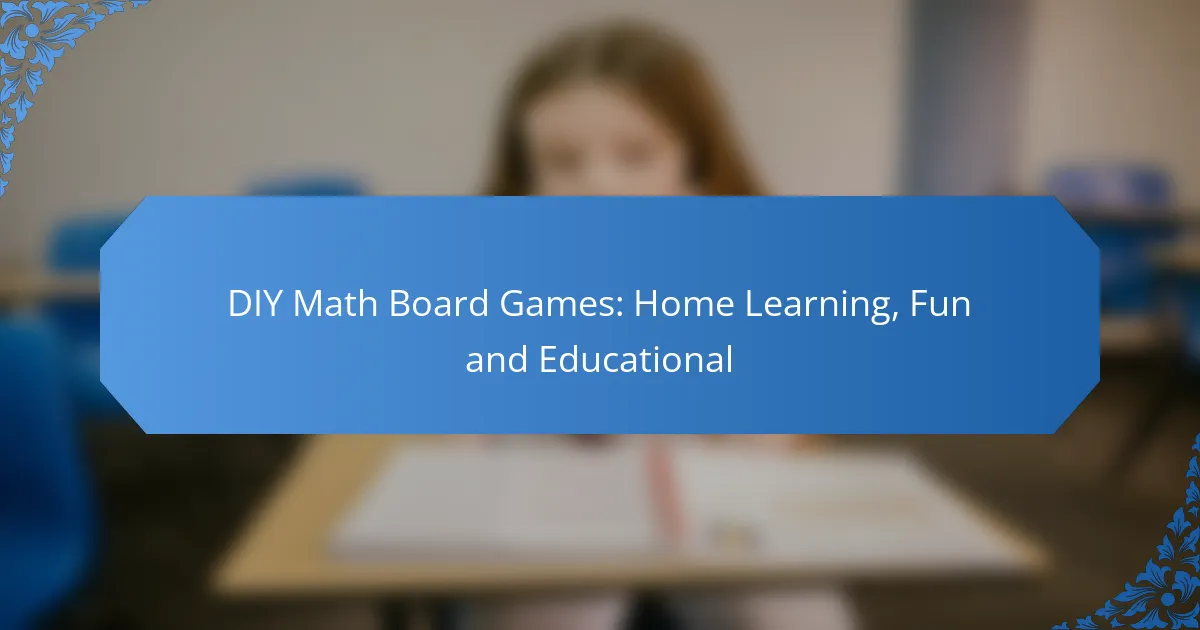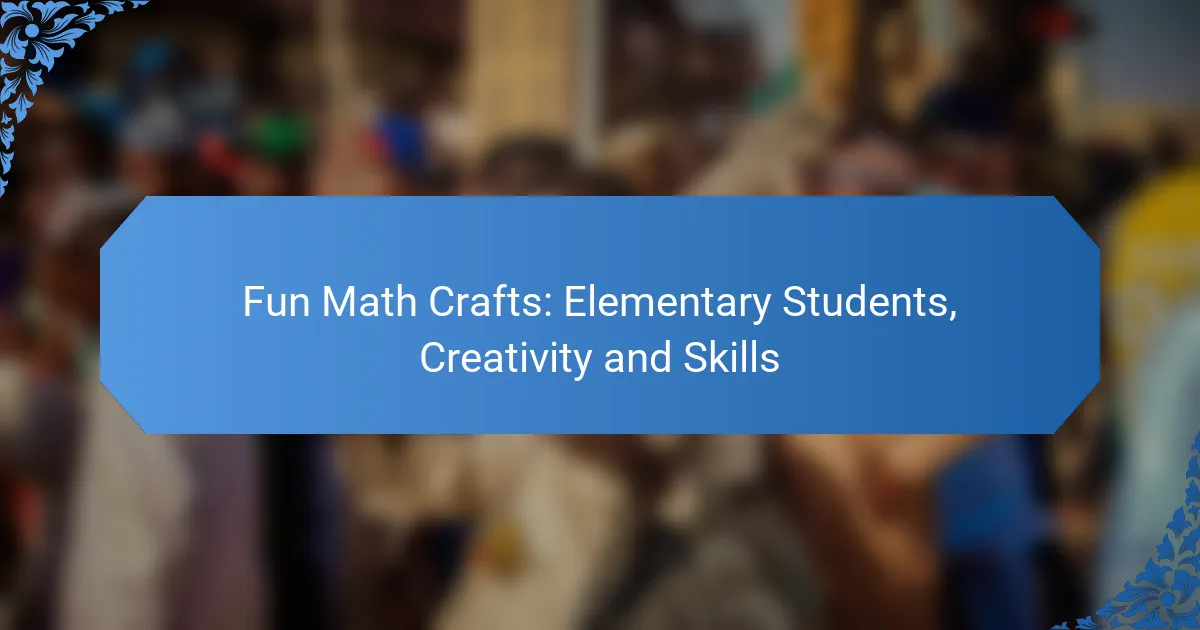Outdoor math activities offer families a unique opportunity to blend fun, learning, and exploration while engaging children in practical math applications. By participating in these hands-on experiences, kids can explore mathematical concepts in real-world contexts, fostering teamwork and critical thinking skills. With the right materials, these activities make abstract ideas more tangible and enjoyable, transforming math into an exciting adventure in nature.

What Are the Best Outdoor Math Activities for Families?
The best outdoor math activities for families combine fun, learning, and exploration while engaging children in practical applications of math concepts. These activities encourage teamwork, critical thinking, and creativity, making math enjoyable and relevant in real-world contexts.
Nature Scavenger Hunts
Nature scavenger hunts are an excellent way to incorporate math into outdoor exploration. Families can create a list of items to find, such as different types of leaves, rocks, or flowers, and assign point values based on their rarity or size.
To enhance the math aspect, participants can tally their finds, calculate totals, or even create fractions based on the number of items collected. This activity not only promotes counting and categorization but also fosters a deeper appreciation for nature.
Outdoor Measurement Games
Outdoor measurement games can help families practice various mathematical concepts, including length, weight, and volume. One simple game involves measuring distances using natural objects, like sticks or stones, to create a makeshift measuring tape.
Families can compete to see who can estimate and then measure the length of different objects in the park, such as benches or trees. This hands-on approach reinforces measurement skills while encouraging teamwork and friendly competition.
Geometry in the Park
Exploring geometry in the park allows families to identify shapes and angles in their surroundings. Parents can guide children in finding geometric shapes in playground equipment, trees, or buildings, discussing properties like symmetry and congruence.
To make it interactive, families can create a shape scavenger hunt where they search for specific shapes and take pictures or draw them. This activity not only reinforces geometric concepts but also encourages observation and creativity.
Math Relay Races
Math relay races combine physical activity with math challenges, making learning dynamic and engaging. Families can set up a course with different stations, each featuring a math problem or puzzle to solve before moving on to the next station.
For example, one station might require solving a simple addition problem, while another could involve measuring a distance. This format promotes teamwork and helps children practice math skills in a fun, active way.
Outdoor Graphing Activities
Outdoor graphing activities provide a practical way to visualize data in a natural setting. Families can collect data on various aspects of their environment, such as counting the number of different bird species or measuring the heights of plants.
Once data is collected, families can create bar graphs or line graphs using natural materials like sticks or stones to represent their findings. This hands-on approach to graphing reinforces data interpretation skills while making math relevant to their surroundings.

How Can Outdoor Math Activities Enhance Learning?
Outdoor math activities enhance learning by providing engaging, real-world contexts for mathematical concepts. These activities allow children to explore and apply math in a hands-on manner, making abstract ideas more tangible and understandable.
Promotes Hands-On Learning
Hands-on learning is crucial for grasping mathematical concepts, and outdoor activities provide the perfect environment for this. For example, measuring the height of a tree using shadows can teach children about ratios and proportions in a practical setting. Engaging with physical objects encourages students to manipulate and visualize math in ways that traditional classroom settings may not allow.
Consider incorporating activities like scavenger hunts where children must calculate distances or estimate quantities. This not only makes math fun but also reinforces skills through active participation.
Encourages Critical Thinking
Outdoor math activities foster critical thinking by challenging students to solve problems in dynamic environments. For instance, while navigating a nature trail, children can be tasked with calculating the total distance traveled based on varying paths and landmarks. This real-time problem-solving enhances their analytical skills.
Encourage students to ask questions and explore different solutions during these activities. This approach helps them develop a mindset geared towards inquiry and reasoning, which is essential for mastering math.
Fosters Collaboration
Collaboration is a key component of effective learning, and outdoor math activities naturally promote teamwork. When children work together on projects like building a geometric shape with natural materials, they learn to communicate their ideas and strategies effectively. This interaction not only builds social skills but also deepens their understanding of mathematical concepts through discussion.
To maximize collaboration, set group challenges that require collective problem-solving. For example, have teams create a budget for a picnic using math to calculate costs and quantities, reinforcing both math skills and cooperative learning.

What Materials Are Needed for Outdoor Math Activities?
Outdoor math activities require a variety of materials that enhance learning through hands-on experiences. Essential items include basic math tools, nature-based materials, and art supplies for visualization.
Basic Math Tools
Basic math tools are fundamental for conducting outdoor math activities effectively. Items such as rulers, measuring tapes, protractors, and calculators can help children understand concepts like measurement, angles, and calculations in a practical setting.
Consider using portable whiteboards or notebooks for quick calculations and sketches. These tools allow for immediate feedback and can be easily transported during outdoor explorations.
Nature-Based Materials
Nature-based materials offer a unique way to engage with math concepts using the environment. Items like leaves, stones, sticks, and flowers can be used for counting, sorting, and even basic geometry by creating shapes or patterns.
For example, children can measure the length of sticks or the circumference of tree trunks, providing real-world applications of measurement. Encourage creativity by asking them to create math problems based on their findings in nature.
Art Supplies for Visualization
Art supplies are essential for visualizing math concepts and making learning enjoyable. Items such as colored pencils, markers, and paper can be used for drawing graphs, creating charts, or illustrating mathematical ideas.
Incorporate activities like making a large number line on the ground with chalk or using paint to create patterns that represent mathematical sequences. This hands-on approach reinforces learning while allowing for artistic expression.

How to Organize Family Math Days Outdoors?
Organizing family math days outdoors involves creating engaging and educational activities that blend learning with fun in a natural setting. Focus on interactive stations, thoughtful scheduling, and thematic elements to enhance the experience for all ages.
Setting Up Activity Stations
Activity stations are essential for keeping family members engaged and learning at their own pace. Consider setting up 3 to 5 stations, each focusing on different math concepts such as geometry, measurement, or basic arithmetic. For example, a geometry station could involve creating shapes with sticks and string.
Ensure each station has clear instructions and necessary materials. Use colorful signs to guide participants and include a timer to encourage movement between stations. This setup promotes exploration and hands-on learning.
Scheduling and Planning
Effective scheduling is crucial for maximizing participation and enjoyment. Plan for a duration of 2 to 4 hours, allowing ample time for each station while including breaks for snacks and discussions. A suggested schedule could involve 30 minutes at each station followed by a 10-minute break.
Consider the time of day and weather conditions when planning. Early morning or late afternoon can provide comfortable temperatures, especially in warmer months. Always have a backup plan for inclement weather, such as moving activities to a covered area.
Incorporating Themes
Thematic elements can enhance the outdoor math experience and make learning more relatable. Choose themes that resonate with family interests, such as nature, sports, or even a favorite book. For instance, a nature theme could involve measuring tree heights or calculating the area of a picnic blanket.
Integrate storytelling or challenges related to the theme to spark creativity. For example, create a scavenger hunt where families solve math problems to find clues. This approach not only reinforces math skills but also fosters teamwork and communication.

What Are the Benefits of Outdoor Math Learning?
Outdoor math learning offers numerous advantages, including enhanced engagement and practical application of mathematical concepts. By integrating math with nature, families can foster a deeper understanding of math while enjoying physical activity and exploration.
Improves Physical Health
Engaging in outdoor math activities encourages physical movement, which is essential for overall health. Activities such as measuring distances, calculating areas for gardening, or even creating math-related scavenger hunts promote exercise while reinforcing math skills.
Regular physical activity can help reduce the risk of obesity and related health issues. Families can incorporate simple exercises, like jumping or running, into math games, making learning both fun and beneficial for physical well-being.
Enhances Social Skills
Outdoor math activities provide opportunities for teamwork and communication, essential components of social skills. When families work together on math challenges, they learn to share ideas, negotiate solutions, and support each other, fostering a collaborative spirit.
Participating in group activities, such as math-based treasure hunts, can help children develop friendships and improve their ability to work with peers. These experiences build confidence and teach valuable interpersonal skills that extend beyond math learning.



